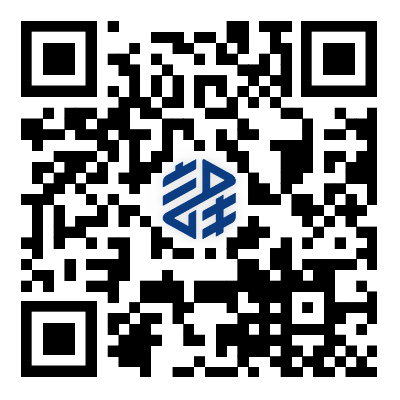为方便大家随时阅读学习,翻译天堂现分段推出政府白皮书中英对照版。每天看点白皮书,每天进步一点点。
可点击菜单栏“自助打卡”,获取往期白皮书推文合集。
——天堂君
一、中医药的历史发展
I. The Historical Development of TCM
1、中医药历史发展脉络
1. History of TCM
在远古时代,中华民族的祖先发现了一些动植物可以解除病痛,积累了一些用药知识。随着人类的进化,开始有目的地寻找防治疾病的药物和方法,所谓“神农尝百草”、“药食同源”,就是当时的真实写照。
In remote antiquity, the ancestors of the Chinese nation chanced to find that some creatures and plants could serve as remedies for certain ailments and pains, and came to gradually master their application. As time went by, people began to actively seek out such remedies and methods for preventing and treating diseases. Sayings like “Shennong (Celestial Farmer) tasting a hundred herbs” and “food and medicine coming from the same source” are characteristic of those years.
夏代(约前2070—前1600)酒和商代(前1600—前1046)汤液的发明,为提高用药效果提供了帮助。
The discovery of alcohol in the Xia Dynasty (c. 2070-1600 BC) and the invention of herbal decoction in the Shang Dynasty (1600-1046 BC) rendered medicines more effective.
进入西周时期(前1046—前771),开始有了食医、疾医、疡医、兽医的分工。
In the Western Zhou Dynasty (1046-771 BC), doctors began to be classified into four categories – dietician, physician, doctor of decoctions and veterinarian.
春秋战国(前770—前221)时期,扁鹊总结前人经验,提出“望、闻、问、切”四诊合参的方法,奠定了中医临床诊断和治疗的基础。
During the Spring and Autumn and Warring States Period (770-221 BC), Bian Que drew on the experience of his predecessors and put forward the four diagnostic methods - inspection, auscultation & olfaction, inquiry, and palpation, laying the foundation for TCM diagnosis and treatment.
秦汉时期(前221—公元220)的中医典籍《黄帝内经》,系统论述了人的生理、病理、疾病以及“治未病”和疾病治疗的原则及方法,确立了中医学的思维模式,标志着从单纯的临床经验积累发展到了系统理论总结阶段,形成了中医药理论体系框架。
The Huang Di Nei Jing (Yellow Emperor’s Inner Canon) compiled during the Qin and Han times (221 BC-AD 220) offered systematic discourses on human physiology, on pathology, on the symptoms of illness, on preventative treatment, and on the principles and methods of treatment. This book defined the framework of TCM, thus serving as a landmark in TCM’s development and symbolizing the transformation from the accumulation of clinical experience to the systematic summation of theories. A theoretical framework for TCM had been in place.
东汉时期,张仲景的《伤寒杂病论》,提出了外感热病(包括温疫等传染病)的诊治原则和方法,论述了内伤杂病的病因、病证、诊法、治疗、预防等辨证规律和原则,确立了辨证论治的理论和方法体系。
The Shang Han Za Bing Lun (Treatise on Febrile Diseases and Miscellaneous Illnesses) collated by Zhang Zhongjing in the Eastern Han Dynasty (25-220) advanced the principles and methods to treat febrile diseases due to exogenous factors (including pestilences). It expounds on the rules and principles of differentiating the patterns of miscellaneous illnesses caused by internal ailments, including their prevention, pathology, symptoms, therapies, and treatment. It establishes the theory and methodology for syndrome pattern diagnosis and treatment differentiation.
同时期的《神农本草经》,概括论述了君臣佐使、七情合和、四气五味等药物配伍和药性理论,对于合理处方、安全用药、提高疗效具有十分重要的指导作用,为中药学理论体系的形成与发展奠定了基础。
The Shen Nong Ben Cao Jing (Shennong’s Classic of Materia Medica) – another masterpiece of medical literature appeared during this period – outlines the theory of the compatibility of medicinal ingredients. For example, it holds that a prescription should include at the same time the jun (or sovereign), chen (or minister), zuo (or assistant) and shi (or messenger) ingredient drugs, and should give expression to the harmony of the seven emotions as well as the properties of drugs known as “four natures” and “five flavors.” All this provides guidance to the production of TCM prescriptions, safe application of TCM drugs and enhancement of the therapeutic effects, thus laying the foundation for the formation and development of TCM pharmaceutical theory.
东汉末年,华佗创制了麻醉剂“麻沸散”,开创了麻醉药用于外科手术的先河。
In the late years of the Eastern Han Dynasty, Hua Tuo (c. 140-208) was recorded to be the first person to use anesthetic (mafeisan) during surgery.
西晋时期(265—317),皇甫谧的《针灸甲乙经》,系统论述了有关脏腑、经络等理论,初步形成了经络、针灸理论。
The Zhen Jiu Jia Yi Jing (AB Canon of Acupuncture and Moxibustion) by Huangfu Mi during the Western Jin time (265-316) expounded on the concepts of zangfu (internal organs) and jingluo (meridians and collaterals). This was the point when theory of jingluo and acupuncture & moxibustion began to take shape.
唐代(618—907),孙思邈提出的“大医精诚”,体现了中医对医道精微、心怀至诚、言行诚谨的追求,是中华民族高尚的道德情操和卓越的文明智慧在中医药中的集中体现,是中医药文化的核心价值理念。
Sun Simiao, a great doctor of the Tang Dynasty (618-907), proposed that mastership of medicine lies in proficient medical skills and lofty medical ethics, which eventually became the embodiment of a moral value of the Chinese nation, a core value that has been conscientiously upheld by the TCM circles.
明代(1368—1644),李时珍的《本草纲目》,在世界上首次对药用植物进行了科学分类,创新发展了中药学的理论和实践,是一部药物学和博物学巨著。
A herbology and nature masterpiece, the Ben Cao Gang Mu (Compendium of Materia Medica) compiled by Li Shizhen in the Ming Dynasty (1368-1644) was the first book in the world that scientifically categorized medicinal herbs. It was a pioneering work that advanced TCM pharmaceutical theory.
清代(1644—1911),叶天士的《温热论》,提出了温病和时疫的防治原则及方法,形成了中医药防治温疫(传染病)的理论和实践体系。
The Wen Re Lun (A Treatise on Epidemic Febrile Diseases) by Ye Tianshi during the Qing Dynasty (1644-1911) developed the principles and methods for prevention and treatment of pestilential febrile diseases. It represents the theory and results of the practice of TCM in preventing and treating such diseases.
清代中期以来,特别是民国时期,随着西方医学的传入,一些学者开始探索中西医药学汇通、融合。
Following the spread of Western medicine in China from the mid-Qing Dynasty, especially during the period of the Republic of China (1912-1949), some TCM experts began to explore ways to absorb the essence of Western medicine for a combination of TCM with Western medicine.










